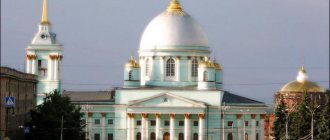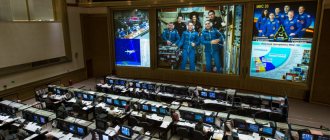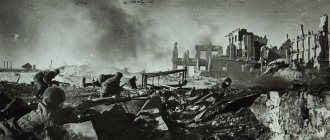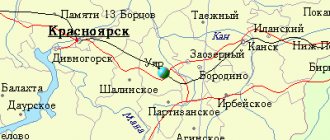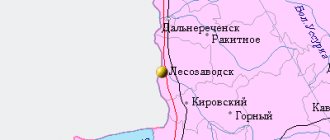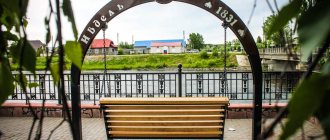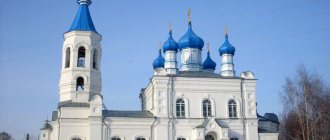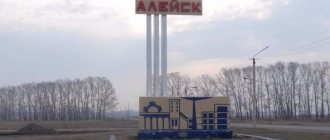Rybinsk is an ancient Volga city in the Yaroslavl region. The sights of Rybinsk are the history of barge haulers on the Volga, the Rybinsk Sea, and the country’s Soviet past. Preserved merchant buildings, shopping arcades and ancient churches immerse the tourist in the Volga city of pre-revolutionary times.
What to see and where to go in Rybinsk, the most interesting and beautiful places.
A few facts about Rybinsk
- Rybinsk is located on both banks of the Volga River, where it leaves the Rybinsk Reservoir and where the Sheksna River flows into the Volga.
- Initially, the ancient settlement appeared on the left bank of the Volga, at the mouth of the Sheksna River and was called Ust-Sheksna. Nowadays there is a museum here on the site of the ancient settlement, and archaeological work is carried out annually.
- The fish settlement was formed on the right bank of the Volga and began to actively develop. Sloboda supplied fish to the Grand Duke's and then to the Tsar's table.
View from the bridge to the embankment and the Transfiguration Cathedral
- In 1776, Rybnaya Sloboda was visited by Catherine II. For her arrival, a temporary wooden palace was built, and a gilded chair was presented as a gift. The Empress ordered the chair to be permanently placed in the Transfiguration Cathedral, where it stood until 1920, and then transferred to the Rybinsk Museum-Reserve.
- In 1777, by decree of Catherine II, Rybnaya Sloboda turned into the city of Rybinsk.
- In 1946, it was renamed the city of Shcherbakov in honor of Alexander Sergeevich Shcherbakov, a Soviet leader. In 1955, the historical name was returned back by Khrushchev.
- In 1984, the city was renamed Andropov - in honor of the first secretary of the CPSU Central Committee. In 1989 it again became Rybinsk.
- Rybinsk was called the capital of barge haulers.
- In Rybinsk there is Red Square, the main street is Krestovaya.
- The historical part of the city is located on the left bank of the Volga and stretches along the embankment.
- Rybinsk is the second largest city in the Yaroslavl region, after Yaroslavl.
House of Culture "Aviator"
- The population of the city is 188.7 thousand people.
- Many films were shot in Rybinsk, the most famous of which is “12 Chairs” by Leonid Gaidai. The detective series “Cold Shores” was also filmed here, where the city appears in winter landscapes.
- The distance from Rybinsk to Moscow is 310 km, to Rostov - 140 km, to Yaroslavl - 85 km, to Uglich - 75 km.
Sights of Rybinsk
The main attractions of Rybinsk are related to water - the great Russian Volga River, the Sheksna River, the Rybinsk Reservoir or the sea, as it is called here, the Rybinsk Hydroelectric Power Station and shipping locks.
Artist's House
In addition, Rybinsk has other interesting attractions: museums, monuments, historical buildings in different architectural styles.
How to get to Rybinsk?
You can get to Rybinsk from Moscow by train. The Moscow-Yaroslavl train runs regularly. Upon arrival in Yaroslavl, you can get to the village by calling a taxi. There is also a bus from the Yaroslavl bus station that will take you directly to the city. Travel time is two hours. You can get to the center of Rybinsk city, beyond its borders or to neighboring cities (for example Cherepovets) by taxi.
You can get to Rybinsk by plane departing from Domodedovo Airport. The flight will take an hour. The return flight takes place at Staroselye Airport.
There is an option to get to the city directly by bus from Moscow from the metro station. Shchelkovskaya. The journey takes eight hours.
To navigate within the city, it is better to use a map.
Rybinsk Reservoir
The Rybinsk Reservoir is a huge artificial reservoir created in 1935-1940 as part of the Big Volga project. To ensure navigation on the Volga and generate hydropower, a unique Volga Cascade was created - a network of hydroelectric power stations. Before the creation of the Kuibyshev reservoir, Rybinsk was the largest.
Construction of the reservoir began near the village of Perebory (now the Rybinsk microdistrict), and the Volgostroy administration was located here. Filling of the reservoir began on April 13, 1941. 130 thousand people were resettled from the flooded area, the city of Mologa and 600 villages were under water.
Weather on the Rybinsk Sea
With the construction of this artificial reservoir, the climate in the coastal area has noticeably softened. In winter, the water in the lake completely freezes. The first frosts on the reservoir begin in November and continue until May. The average ice thickness on the reservoir reaches about 0.6–0.7 meters.
The closer to the lake, the cooler the air. In summer, the water throughout the entire water area warms up evenly only in the second half of July. On the surface, the water temperature reaches +23…+25 °C. In the coastal part it can be a couple of degrees warmer.
Rybinsk Sea: daily weather forecast
© Wayne77
Rybinsk HPP
Rybinsk HPP
The Rybinsk hydroelectric power station was not completed at the beginning of the Great Patriotic War. Despite this, it provided electricity to the whole of Moscow and the Moscow region. The station building is an architectural and historical monument, made in the Stalinist Empire style according to the design of architects M.M. Shnektorova, M.M. Bogdana, V.Ya. Movchana, D.B. Savitsky and D.E. Morozova.
House of Artists
Address: st. Pushkina, 52
The Artists' House is a fine example of wooden architecture, designed in the Art Nouveau style characteristic of the early twentieth century. It is this building that adorns tourist brochures telling about the city of Rybinsk. The house of artists was built in 1900 by S. G. Gordeev. The building, located on the corner, has two facades facing the street, and the nearby railway station gives the house special significance.
Two tents rise above the corner part of the house, each of which is oriented towards one of the streets. The color of the mansion is given by an impressive balcony with a forged patterned lattice, which unites the facades of the house. The window frames, made in the Naryshkin Baroque style, also serve as decoration for the artists’ house.
Mother Volga
On the banks of the Rybinsk Reservoir there are many tourist centers where you can relax and go fishing, ride a boat or motorboat.
The Mother Volga monument was built in 1952-1953 as a monument to the Volgostroy builders who built the Rybinsk Reservoir. Its creators are architect N. Donskikh, sculptors S.D. Shaposhnikov. and Malashkina V. The height of the monument together with the pedestal is 17.4 meters,
Mother Volga is a monument in the form of a woman in a long dress looking into the distance. With one hand she points to the Rybinsk Reservoir, in the other she holds the GOELRO plan. A petrel hovers at her feet.
Mother Volga stands on the sandy spit of the lock dam; you can see it from the water, sailing nearby on a boat or in the Perebory microdistrict from the river pier. The monument is a symbol of the city.
The famous Rybinsk Sea of a small cozy town
Rybinsk Reservoir
In Soviet times, Rybinsk became famous due to such a grandiose event as the creation of the Rybinsk Reservoir. Because of its enormous size, people call it the Rybinsk Sea. At the time of its creation, the Rybinsk hydroelectric station occupied the second largest place, after the Dnieper hydroelectric station. It was one of the most powerful in the Soviet Union.
It was the Rybinsk hydroelectric complex that took on the bulk of the load on supplying Moscow with electricity during the Great Patriotic War.
Dam and locks
And here is the modern entrance to the dam along the Pereborsky tract. Well, how can you not take a tour of this strategic site?
